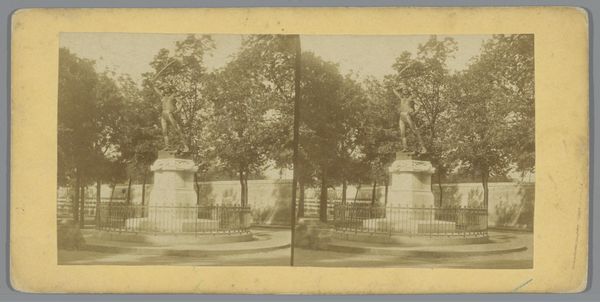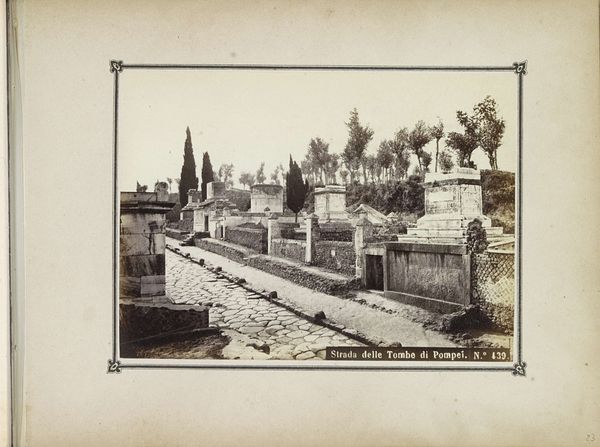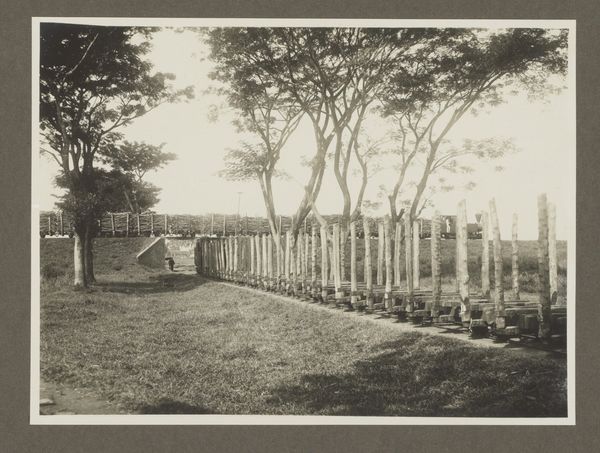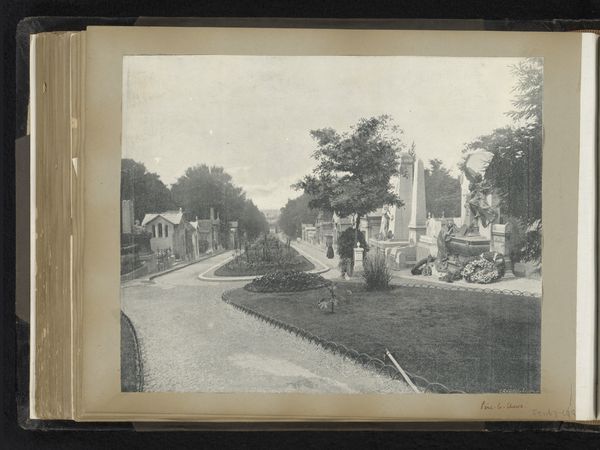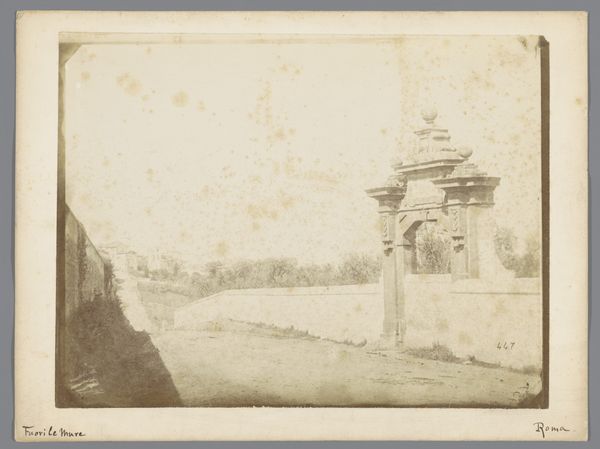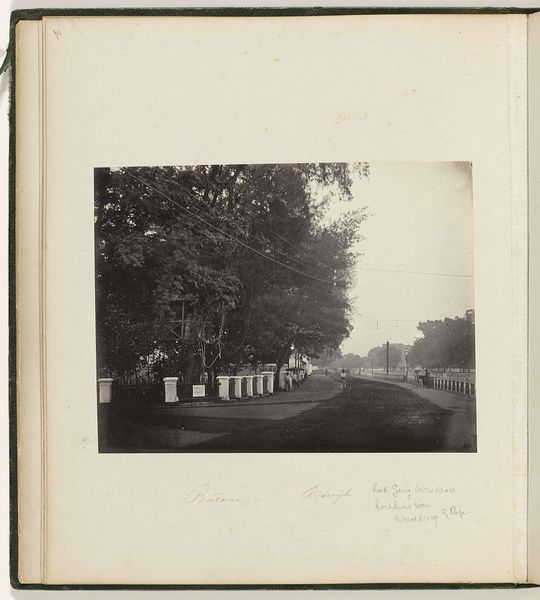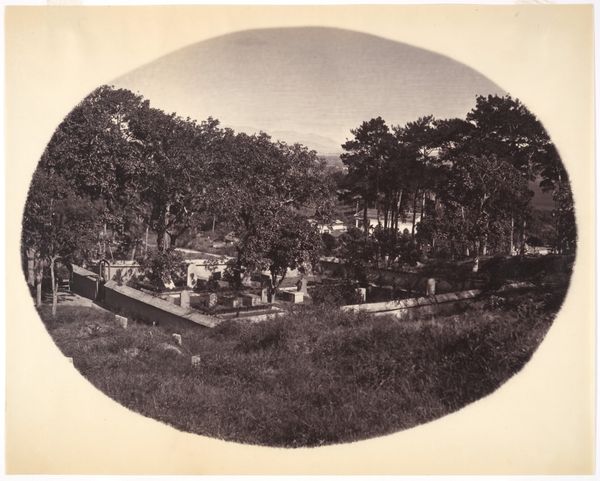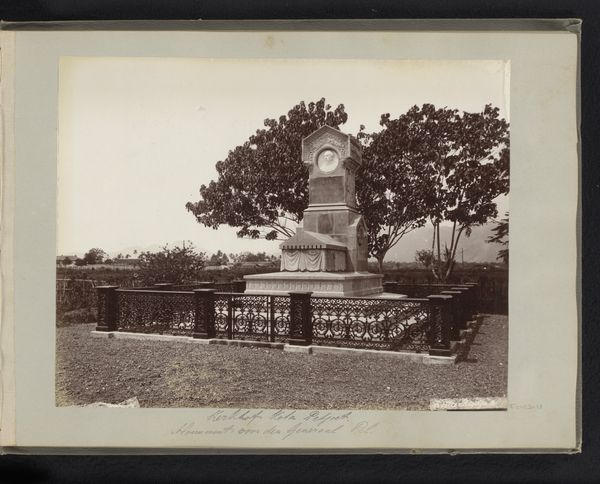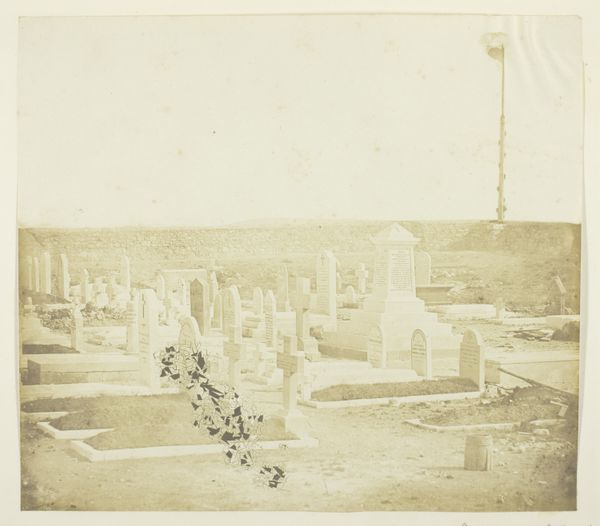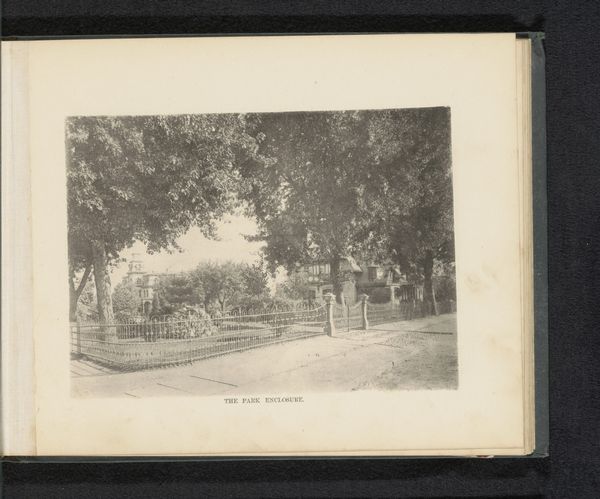
print, photography, albumen-print
# print
#
landscape
#
photography
#
orientalism
#
cityscape
#
albumen-print
Dimensions: height 214 mm, width 276 mm
Copyright: Rijks Museum: Open Domain
Editor: This albumen print, “Kerkhof Kota-Petjoet met het Kota-Pohama monument" by A. Kaulfuss, created between 1891 and 1894, depicts what appears to be a cemetery landscape. The crisp white fences seem oddly juxtaposed with the somber mood. How do you interpret this work? Curator: The striking contrast you observe isn't accidental. These colonial-era photographs, particularly those classified under Orientalism, weren't just about documentation; they were about constructing narratives. The clean, European-style fences demarcating the cemetery, set against the backdrop of an Indonesian landscape, speak volumes about power dynamics and the imposition of Western order. Editor: So the photograph isn't just a depiction of a place, but also of an ideology? Curator: Exactly. Consider what the presence of the memorial and the fence signifies in a colonial context. Whose stories are being told and preserved? Whose are being erased? It subtly reinforces the colonizer’s presence and “civilizing” mission, visually asserting dominance over both land and memory. Editor: The cemetery almost becomes a stage for colonial power. Is it intentional, do you think, or a result of the times? Curator: It’s complex. Photography was a tool, often used deliberately to portray a particular version of reality. Kaulfuss, knowingly or unknowingly, participated in that construction. Look at the angle, the framing. Everything contributes to a narrative that reinforces a colonial worldview. Have you ever wondered who was consuming this image and what was the intended take-away from viewing? Editor: That shifts my understanding entirely. I was initially focused on the aesthetic aspects, but now I see the photograph as a political statement, carefully constructed and deployed. Curator: Indeed. It reminds us to always question whose perspective is being represented and what underlying power structures are at play, which helps expose some painful history. Editor: I learned so much from looking deeper into these hidden meanings. It's more than just a picture.
Comments
No comments
Be the first to comment and join the conversation on the ultimate creative platform.
